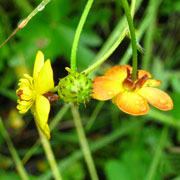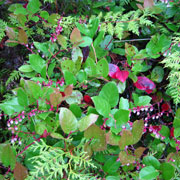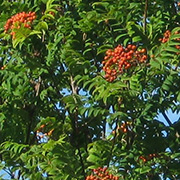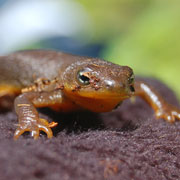Terrestrial Resources
Regional Rare Plant Survey
US Forest Service 
Meridian conducted surveys of plant community
types to identify the presence and abundance
of rare plants across four project areas on
the Thorne Bay, Ketchikan, and Wrangell Ranger
Districts of the Tongass National Forest.
Projects included all or portions of the
following survey areas: North Prince of Wales
Island, Kosciusko Island, Heceta Island,
Tuxekan Island, Zarembo Island, and Neets
Bay-Shrimp Bay Peninsula on Revillagigedo
Island. The surveys were completed to provide
land managers with an understanding of the
potential to find undocumented rare species in
similar habitats across the Forest. Our
surveys included searches for 101 vascular
species on unique geological features in
remote sites during 2010, 2012, and 2013.
Meridian staff managed all project logistics,
coordination with Forest Service staff,
electronic data management and mapping, and
technical reporting.
Wildlife Habitat Management Plan
Cowlitz PUD 
Meridian developed a Wildlife Habitat
Management Plan for the Swift No. 2 Wildlife
Management Area. The plan specifies measures
to accelerate the development of old-growth
characteristics in young, dense forest stands,
improve elk forage, control noxious weeds,
minimize disturbance to wildlife, and protect
wetlands and riparian habitat. These measures
benefit species such as pileated woodpeckers,
northern spotted owl, black-capped chickadee,
yellow warbler, Roosevelt elk, dabbling ducks,
and pond-breeding amphibians. Meridian
continues to assist the PUD with
implementation of the plan, including annual
invasive plant and public access surveys,
wetland and meadow assessments, and design of
silvicultural treatments.
Vegetation Cover Type Mapping and Habitat Assessment
Snohomish County PUD
Meridian conducted a wildlife habitat study
for the proposed Sunset Fish Passage and
Energy Project to evaluate the potential
effects of a proposed 30-MW hydropower project
on sensitive habitats and wildlife species
with legal protection or special conservation
or management designations. The study involved
classifying and mapping existing vegetation,
calculating changes in cover type acreages
that would occur as a result of construction,
and comparing habitat requirements of special
status species with attributes of habitat in
the project area. Results of the study will be
included in the FERC license application and
used to design a terrestrial resource
management plan to offset project impacts.
Tyee Transmission Line Invasive Plant Study
Southeast Alaska Power Agency 
Meridian conducted several field studies as
part of an environmental assessment to
evaluate the effects of SEAPA's proposal to
use an off-road vehicle to access
approximately 27 miles of the Tyee
Transmission Line. Meridian prepared an
invasive species survey report and risk
assessment, developed a list of priority
species, and identified a set of
cost-efficient best management practices and
mitigation measures to minimize the
introduction and spread of invasive plants
without increasing the risk of additional
ground disturbance.
Terrestrial Resource Protection Plan
Tacoma Power 
As part of license implementation for the
Cushman Hydroelectric Project, Meridian
developed a Terrestrial Resource Protection
Plan for Tacoma Power that includes two
components. The first identifies measures to
minimize short-term wildlife disturbance
during construction and habitat enhancement
activities, while the second presents
guidelines for long-term land management. The
plan evaluates all the license conditions that
could cause adverse effects on wildlife,
provides a list of best management practices,
and defines specific measures to protect key
species and habitats.

